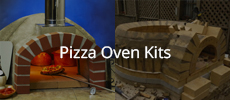Hello Geordie! Watching this post with interest. I'm buidling one over in Rydal in the Lake District, based very loosely on the forno plans. Interesting to see what materials etc you use and costs, because being a predominantly US based thing here, how does someone like you or me get these items etc. PS- Im a South Shields lad. Live in the Lakes now, starting me own Pizza business.
Announcement
Collapse
No announcement yet.
Another WFO in the UK - 42" Pompeii
Collapse
X
-
Hey Micky! its a small world i live in Jarrow so just around the corner! I will have to make a trip down to check out the business when its up and running! Yes i know what you mean about it being mainly US based so it is a little more difficult finding info and stock in the UK, but ive managed so far and have most of my bits now. I have noted down all my costs so far and will try my best to help where possible if you need anything feel free to send me a private message, although im also new to the game so not got a great deal of knowledge just yet.Originally posted by MickyPizza View PostHello Geordie! Watching this post with interest. I'm buidling one over in Rydal in the Lake District, based very loosely on the forno plans. Interesting to see what materials etc you use and costs, because being a predominantly US based thing here, how does someone like you or me get these items etc. PS- Im a South Shields lad. Live in the Lakes now, starting me own Pizza business.
My order turned up from Kilnlinings, 300 firebricks (230 x 114 x 64mm) 9 bags of vermiculite, 2 bags of fireclay, 3 rolls of fibre blanket and 8 boards of calcium silicate board (500 x 1000 x 50mm)
i also got some lime,sand and cement and started marking out my dome too.
Also i picked up a bunch more reclaimed bricks and a gazebo to work under, however the gazebo was shocking quality so i ended up covering it with a big tarpolan i had, does the trick but looks like a crime scene when i have my white tyvek overalls on with my respirator, gloves and goggles!6 PhotosLast edited by brad mole; 07-08-2018, 06:18 AM.
Comment
-
Finally i have made my jig, copied like many from the other amazing ideas on this forum so credit to the original creator! i know its plywood and may swell but i did not have enough steel or aluminium to make it from so i resorted to plywood. I have made it so i can remove the angle jig to leave a square cut fence which will do for a lot of cuts to save the other jig getting worn too quick.4 Photos
Comment
-
So i managed to get the floor down today, another milestone in the build! i started by laying a layer of aluminium foil overlapping by 50%, I know not many people do this but i was in 2 minds whether to do it, i did see another build with it but it doesn't seem a popular choice, but why? calcium silicate is known for being poor when in contact with moisture and this is right where it will, if at all get in contact with it being sat right on the concrete slab so i thought if i have this layer then at least it acts as a barrier, i know it will not allow moisture to be driven out the bottom but would there be any moisture that needs to be pushed out the bottom? i intend on wrapping the foil up the sides of the calcium silicate board to protect it as best as possible, but maybe i will not do that to allow a little room for driving moisture out through the sides seen as it cannot go straight out the bottom? anyone with experience feel free to tell me im doing it wrong?
So i also cut 2 x 50mm layers of my calcium silicate board then laid the floor bricks in a herringbone pattern, marking and cutting in batches for the outer curves. i wasnt looking forward to cutting these as i thought they would be tricky and dusty but i was so surprised that the saw makes light work of cutting these bricks and keeps alot of dust down being water fed!6 PhotosLast edited by brad mole; 07-08-2018, 06:50 AM.
Comment
-
Nice work on the jig. I also used wood (an old cabinet door) so I slathered on some urethane to make it water "resistant" for the duration of the project then passed it on to another builder. Water has a way of finding it way in, so you need to allow a way to its way out as well. By cocooning the CaSi in the foil it is possible that water could pool. I cannot remember if you are planning an enclosed structure or not. If you are, the water entering the from the hearth is not a big a issue vs a open oven.
Comment
-
Thanks joe, i have read many times that people say raising the board up is a good thing, i was a little worried that the cooking floor level is getting high and figured this should do a good enough job?
Thanks russell, i think your jig was one i had in mind while making mine, varnish is a good shout, i was thinking of maybe plasti-dipping it but i may just varnish. I plan on having my dome exposed and rendered but ibwill attampt to seal every possible place water could enter.
One question for you guys! Im planning on cutting my first ring of bricks tomorow and maybe start my arch bricks. Ive heard you should only put homebrew mix on the sides of the first course and not the underside, i guess to keep the whole dome floating and able to move if need be? If so does this also apply to your first arch bricks or would they always want homebrew on the floor side too?
Also if the first ring of bricks gets no homebrew on the underside then they obviously cant be set at an angle with the IT? So do they just get cut with angles and no tilt?
I will just be going straight on with half bricks (with angle cuts and tilted cuts where needed) and no soldier course or anythingLast edited by brad mole; 07-08-2018, 01:04 PM.
Comment
-
I did not use any mortar on the bottom of the bricks that were on the CaSi. or the bottom of the first course of the dome. Your goal is to have tight and staggered inner joints. This can be accomplished without a angle cut until the formation of the inverted v in the upper courses of the dome, then a bevel cut is required to eliminate the v. You do not need to bevel the entire side of the brick, only where the two opposing sides overlap or conflict. It will save you some saw time by not beveling the entire side of the brick. The first couple courses are flat and most likely do not need any tilt or min tilt. Also concentrate your best brick faces on the back half of the dome with adjustments on the front half of the dome (they will never be seen once oven is done)1 Photo
Comment
-
Thanks again Russell!
I decided to do the same and not mortar any dome or arch to floor bricks on the underside, only the sides. All went well today and got the first ring cut and set in, it feels good to get to this stage, although i noticed after i finished and was packing up that the mortar was cracking away from some bricks as it dried, is this normal or have i done something wrong?6 PhotosLast edited by brad mole; 07-09-2018, 11:17 AM.
Comment
-
Nice start, see you took my advice and made an adjustment to the course toward the front of the dome. One thing, as you move up and start beveling, only cut a few bricks first (maybe 6 or so) to see how they fit instead of the full course just to make sure the bevels are correct. Are you soaking the bricks before you lay them? If not they may be absorbing the water from the mortar too quickly.
Comment
-
Hi Brad. Will reply to your first message later. Just a note on the drying mortar. I also seen something somewhere else about soaking bricks..
Id take into consideration the current heat wave the UK is enduring. We're used to RAIN. But there's been little or none for weeks. Your garden as well as your supplier has been parched. I'm still at the stone foundations stage (next step concrete hearth plinth) and my muck was drying up as quick as I was making it. Great inspiration this thread though mate. Well done!
Comment
-
Yes thats one bit of advice i did have in mind was to keep the cuts for where you wont see them in the end, thanks for that! yes i think i will start beveling on the next course, i thought i knew exactly what i was going to do but now im having second thoughts, i know the intention is to keep tight inner joins, but if i intend to have parallel mortar joins like i have in the first ring, then that means i will have mortar thickness on every join of around 3mm, so would that mean to get a tight inner join i would not be aiming for a parallel join (when looking down from above) and aim for the mortar join to look tapered from zero at the inner edge to 3mm or more at the outer edge?Originally posted by UtahBeehiver View PostNice start, see you took my advice and made an adjustment to the course toward the front of the dome. One thing, as you move up and start beveling, only cut a few bricks first (maybe 6 or so) to see how they fit instead of the full course just to make sure the bevels are correct. Are you soaking the bricks before you lay them? If not they may be absorbing the water from the mortar too quickly.
Yes i soaked the bricks but some more than others, and some i left out to dry a little after soaking, maybe im supposed to lay them when they are still soaking wet?
Cheers micky, no problem, yes its unheard of over here to have such a dry and warm spell isnt it? il try soaking them for longer next time. although they seemed to be cracking as they dried at the time, i went back in the morning and the cracks didnt get any worse, so i have maybe 4 or 5 small cracks where it looks like the mortar has started to creep away from the brick, very small though like a hairline crack, does everyone think this is acceptable or should i rebuild?Originally posted by MickyPizza View PostHi Brad. Will reply to your first message later. Just a note on the drying mortar. I also seen something somewhere else about soaking bricks..
Id take into consideration the current heat wave the UK is enduring. We're used to RAIN. But there's been little or none for weeks. Your garden as well as your supplier has been parched. I'm still at the stone foundations stage (next step concrete hearth plinth) and my muck was drying up as quick as I was making it. Great inspiration this thread though mate. Well done!
Comment
-
The outer joint width will be what it works out to be and just filled with mortar. But that said, if you want parallel tight side joint space then that is up to you, I did this, but no one really sees this once your done and it does take more time to get exact. Brick wetness, it will depend on the water content of the mortar, how hot it is, how wet or dry the bricks are. You will get a feel for it as you lay more courses.
Comment





Comment